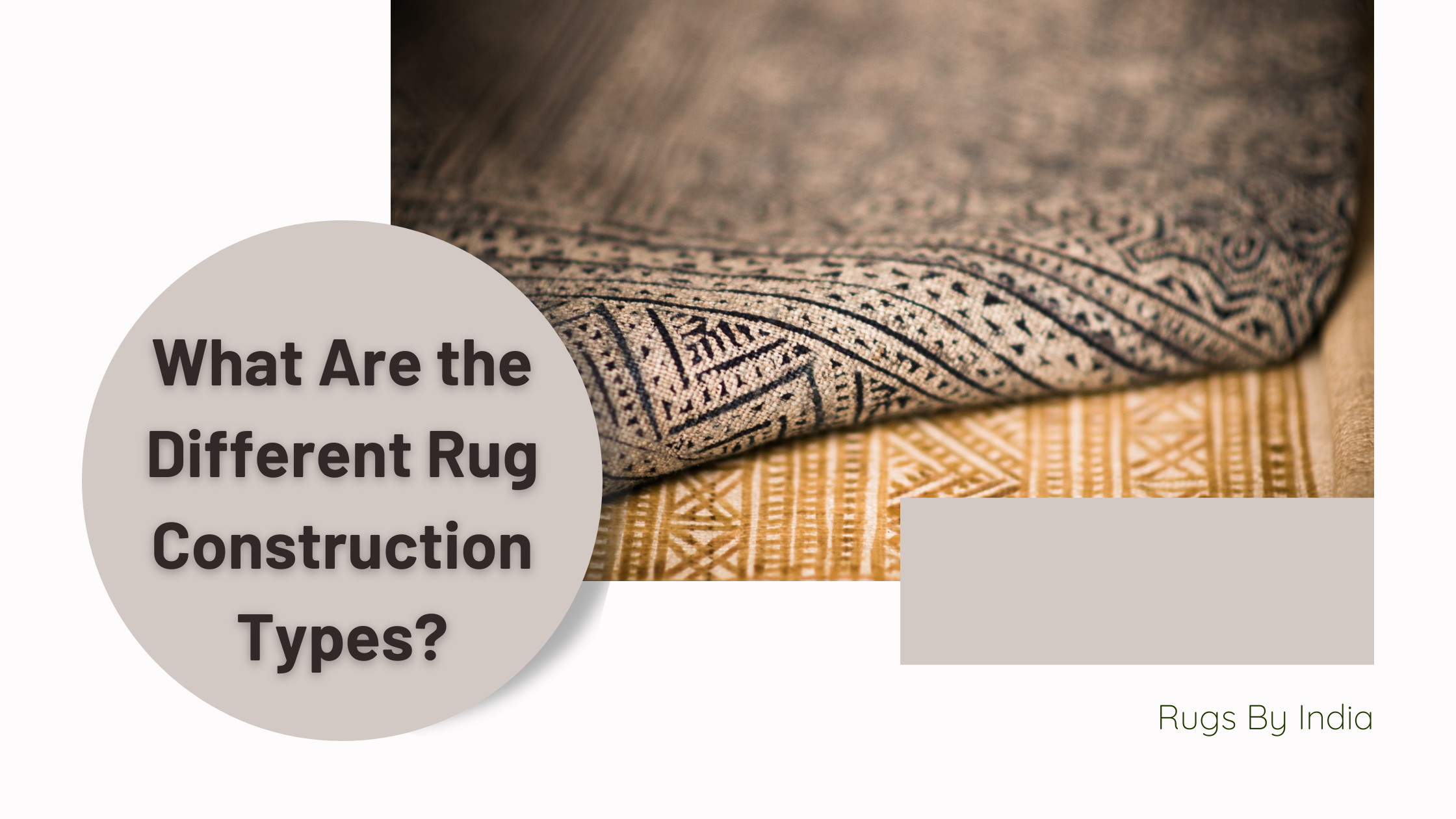The construction of a rug depends on how it is structured which creates a difference between all varieties. Whether it is hand-hooked or a hand-knotted rug, it depends on its construction. It also determines the texture, look, longevity, and quality of the rug.
When choosing a rug there are a few common constructions to be followed:
Hand-Woven Slag
With a number of twisted, flush, and slightly felted these yarns are hand-woven shag rugs and are manufactured manually operated looms. A long Steel rod is used to sprout the fibers by a team of weavers across vertical strings that go through the length of the rug.
- Longevity: 2 to 8 years
- Making time: 4-6 months
- Shedding: wool – moderate for an extended period, polyester – minimal shedding; subsiding over time
Hand-Tufted Rugs
There is no need to create knots for hand-tufted rugs. By a hand-held tool or using a machine through the rugs backing material loops of yarn are pulled. To create a smooth cut pile surface the loops are then sheared.
Although more work is required to construct a hand-knotted rug but still manufactured tufted rugs are of high quality. And also, hand-tufted rugs are produced faster and at a reasonable price. Here, one thing is to be noticed hand-tufted rugs can require more frequent vacuuming and shed more than other rugs.
Best for: living rooms or bedrooms, family rooms
- Longevity: for standard rugs, 3 to 6 years; for premium rugs, 5 to10 years
- Making time: 4 to 6 months
- Shedding: Sheds at first, subsiding over time
- In Comparison to hand-knotted rugs, hand-tufted rugs take less time in producing, hence they are more reasonable. Hand-Tufted rugs give a cushiony feel due to the thicker pile height
Hand-Hooked Rugs
Tufting and Hooking are similar to each other but here Yarn loops remain intact. Through the rugs, backing material loops of yarn are pulled by using a hand-held hooking needle or a machine. To create a knobby embroidered look hair the loops are left alone instead of being shared like tufted rugs.
Hand-hooked rugs and tufted rugs are similar in making but in tufted rugs, yarns are shared to make a smooth cut-pile but here, the loops are unbroken so as to give it a finishing like the embroidered look. Rug gets removed from the frame after the design is completed then the next fabric is stickled at the back so as to hold the yarns in proper places.
If we compare it to the hand-knotted rugs, hand-hooked rugs take less time in manufacturing and they are more reasonable.
- Longevity: 3 to10 years
- Making time: 4 to 6 months
- Shedding: Less shedding than hand-tufted rugs, subsiding over time
- Perfect for bedrooms, family rooms, and living rooms
Hand-Knotted Rugs
The vertical frame is known as hand-knotting rugs or looms. From top to the bottom of the loom columns of the threads are stretched forming the fringe ends that are the foundation of the rug.
This technique is the most laborious method. To make up the length of the rug weavers have to tie the individual nodes to the warp yarns. These notes manufactured the pile is the surface of the rug. There is no similarity between the two hand-knotted rugs as they are crafted by artisans.
How to recognize – To show the colors and overall patterns which are used on the surface of a rug individual knots are shown on the back of hand-knotted rugs. A slight unevenness can be seen in weaving and knots. A fringe in the hand-knotted rug can be an extension of the rug’s base.
- Making time: 5 to12 months
- Shedding: least
- Hand-knotting is the most labor-intensive, complicated rug weaving process nowadays.
- Best for bedrooms, living rooms, and libraries.
Few Other Types Of Rugs:
-
Loomed
Looms are manufactured by machine. Manufacturing of modern loomed carpets is done by machines. It means that artisans don’t make tufts, knots, or hooks by hands on the frame. Over the loom, the frame of yarn is stretched. To construct these rugs the artisan has to work with the tools and the needle mechanically.
-
Braided
To make a carpet is the simplest way. More than two strands of threads are used in braided rugs. At home also these carpets can be made. In the process of its making the initial stand goes down the other one. In the next step, the other three strands are pulled over the next yarn. By the intervening of yarn stands a dense network is made which completes the carpet.
The rug construction techniques which are discussed above are mainly followed by the manufacturing of carpets. Now it’s easier to detect the type of construction whenever you go to buy a rug. The aim of Rugs By India is to make the finest and most exclusive rugs by making them of high quality. Our greatest assets are the weavers and the artisans.
Related Blogs:

